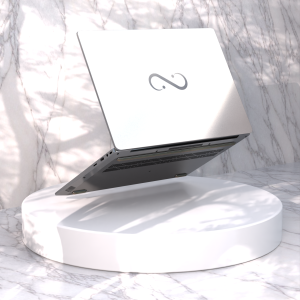Understanding the Anatomy of a Computer Keyboard: A Comprehensive Overview of Keyboard Parts
The computer keyboard, a fundamental interface between humans and machines, is often taken for granted in our daily computing activities. Yet, understanding its structure and components can enhance our knowledge about its functionality, and potentially influence our choices when upgrading or purchasing a new keyboard. In this blog post, we’ll delve into the various parts of a computer keyboard, exploring each component’s role and significance.

The Basics of Keyboard Layouts
Before we dive into the intricate parts of a keyboard, it’s essential to understand its overall layout. The standard QWERTY layout is the most commonly used in English-speaking countries, but keyboards can also feature different layouts like AZERTY, Dvorak, and Colemak to accommodate various linguistic and ergonomic needs.
Most keyboards share a general structure, typically including:
- Alphanumeric Keys: These keys include the letters A-Z, numbers 0-9, punctuation marks, and special characters. Collectively, they comprise the primary means for text input.
- Modifier Keys: Keys such as Shift, Ctrl (Control), Alt (Alternate), and Fn (Function) modify the input of other keys, enabling shortcuts and special functions. For instance, pressing Alt with a letter may trigger an application-specific command.
- Function Keys: Located at the top of the keyboard, the F1 to F12 keys provide quick access to software features, operating system shortcuts, and specific functions depending on the application in use.
- Navigation Keys: Includes arrow keys, Home, End, Page Up, and Page Down, which help users navigate through documents and web pages.
- Numeric Keypad: This section, typically found on full-sized keyboards, resembles a calculator keypad, allowing for efficient number entry.
- Special Keys: Keys such as Print Screen, Scroll Lock, Pause/Break, and Escape serve unique functions that support user interaction with software and operating systems.
Detailed Examination of Keyboard Parts
Now, let’s focus on the individual components that make up a computer keyboard. Each part plays a crucial role in the keyboard’s performance and usability.
1. Keycaps
The keycap is the plastic part you press when typing. Keycaps come in various shapes, sizes, and materials, from ABS (Acrylonitrile Butadiene Styrene) to PBT (Polybutylene Terephthalate), each affecting the durability and feel. Some keycaps are designed for specific functions, such as sculpted profiles for ergonomics or special textures for tactile feedback.
2. Switches
At the heart of a mechanical keyboard lie the switches. Switches determine the feel and responsiveness of each key. There are different types of switches, each with distinct characteristics:
- Mechanical Switches: Known for their tactile feedback and longevity, mechanical switches can be classified into three main types: tactile (provide feedback without a click), clicky (emit a distinct sound when pressed), and linear (smooth and silent).
- Membrane Switches: Usually found in budget keyboards, membrane switches consist of a pressure-sensitive membrane layer, where contacts are made when keys are pressed. They are generally quieter but offer less tactile feedback compared to mechanical switches.
- Scissor-Switches: Often used in laptops, these switches combine a rubber dome mechanism with a scissor-like stabilization structure, providing a lower profile and a quiet typing experience.
3. PCB (Printed Circuit Board)
The PCB is the critical electronic component that connects all the keys to the computer. It translates key presses into signals that the computer understands. Different PCBs can offer features such as customizable key mapping, anti-ghosting, and N-key rollover, which allows multiple key presses to be registered simultaneously.
4. Backlighting
Backlighting is a feature found in many modern keyboards, especially gaming and high-performance models. LED lights illuminate the keys, making them visible in low-light conditions. Some keyboards allow customizable lighting effects, including color cycling, static colors, or specific effects triggered by key presses.
5. Housing
The keyboard’s housing or frame is the outer shell that contains all components. It can affect both durability and aesthetics. Keyboards can be made from various materials, including plastic, metal, or a combination of both. The choice of material often influences the keyboard’s weight, sturdiness, and overall feel.
6. Stabilizers
Stabilizers are additional components used primarily on larger keys (like the spacebar, enter, and shift keys) to ensure that they press down evenly and don’t wobble. Poorly designed stabilizers can lead to an unsatisfactory typing experience, often resulting in a rattling sound or uneven keypresses.
7. Cable and Connectors
Modern keyboards typically use USB connections, while some may feature wireless technologies such as Bluetooth. The quality of the cable can affect performance; braided cables tend to be more durable and resistant to wear. Additionally, some gaming keyboards offer detachable cables for convenient transport.
8. Feet and Support
Keyboards often come equipped with adjustable feet that allow users to set the keyboard at an angle to improve ergonomics and comfort during prolonged typing sessions. The design and material of the feet can affect stability on various surfaces.
Conclusion
Understanding the components of a computer keyboard can empower users to choose the best keyboard that meets their needs, whether for casual typing, gaming, or professional use. With options ranging from mechanical switches for tactile feedback to ergonomic designs that enhance comfort, there’s a keyboard to suit every preference.
As technology continues to evolve, we may see additional advancements in keyboard design, features, and materials. For now, a basic knowledge of a keyboard’s anatomy is invaluable for anyone looking to optimize their computing experience. Whether you’re a casual user or a dedicated gamer, an informed investment in your keyboard can significantly enhance your overall productivity and enjoyment of computer use.
Shop Now






